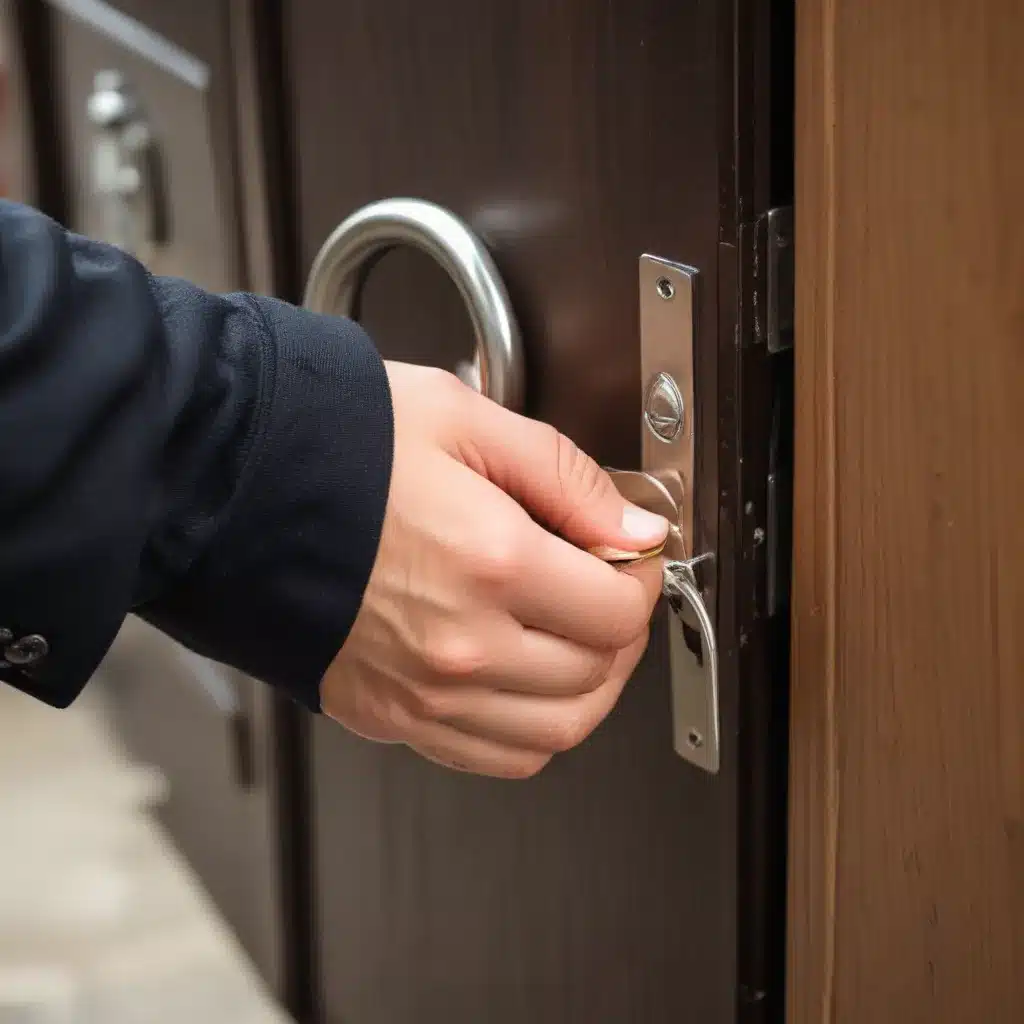
In the bustling heart of Washington, DC, where the streets are lined with historic landmarks and modern high-rises, the need for advanced security measures is paramount. As an experienced locksmith serving the local community, I’ve witnessed firsthand the importance of proper safe handling techniques to deter theft and protect valuable assets.
Secure Storage Solutions
Safeguarding valuables begins with selecting the right storage solution. From traditional safes to high-tech vaults, the options are vast and varied, each offering unique features and levels of protection.
Types of Safes and Vaults
When it comes to securing valuables, the choice between a safe and a vault can be a critical one. Safes, often found in homes and small businesses, provide a compact and portable solution, ranging from basic mechanical models to sophisticated electronic ones. These can be an excellent option for storing documents, jewelry, or small-scale valuables.
On the other hand, vaults offer a more robust and comprehensive level of protection. Typically found in commercial settings or high-security environments, vaults are designed to withstand even the most determined attempts at forced entry. These heavy-duty structures, constructed with reinforced concrete and steel, can provide an unparalleled level of safekeeping for larger items, such as artwork, precious metals, or sensitive data.
Access Control Measures
Regardless of the storage solution chosen, the implementation of robust access control measures is essential. This can include biometric security systems, such as fingerprint or iris scanners, as well as digital keypads with randomized entry codes. By limiting access to authorized personnel only, you can significantly reduce the risk of unauthorized entry and potential theft.
Monitoring and Surveillance
In addition to physical security measures, the integration of advanced monitoring and surveillance systems can further enhance the protection of valuable assets. This can include closed-circuit television (CCTV) cameras, motion sensors, and remote monitoring capabilities, allowing for real-time observation and rapid response to any suspicious activity.
Handling Procedures
Proper handling protocols are crucial in safeguarding valuables, from the moment they are placed in storage to the time they are retrieved or disposed of.
Proper Packing and Transport
When transporting valuable items, it is essential to utilize secure and tamper-evident packaging. This can involve the use of tamper-resistant seals, secure containers, or even armored transport services. By ensuring the integrity of the packaging, you can minimize the risk of unauthorized access during the transfer process.
Access Protocols
Establishing clear and well-documented access protocols is paramount. This includes maintaining detailed logs of all individuals who have accessed the storage location, as well as implementing strict procedures for the retrieval and return of valuables. By maintaining meticulous records, you can enhance accountability and quickly identify any potential breaches.
Disposal or Destruction
The proper disposal or destruction of sensitive documents, electronic media, or other valuable items is a critical aspect of safeguarding. This may involve the use of secure shredding services, data erasure techniques, or the physical destruction of physical assets. Adhering to these protocols can prevent the unintended release of confidential information or the diversion of valuable materials.
Risk Assessment Strategies
Effective safeguarding begins with a comprehensive understanding of the valuable assets at stake and the potential threats that may arise.
Identifying Valuable Assets
The first step in any risk assessment is to accurately identify and catalog the valuable assets that require protection. This can include everything from cash and financial instruments to intellectual property, sensitive data, or rare collectibles. By clearly defining the scope of what needs to be secured, you can better allocate resources and develop tailored security strategies.
Threat Analysis
Alongside identifying valuable assets, it is essential to conduct a thorough threat analysis. This involves assessing the potential risks, such as burglary, insider theft, or natural disasters, that could compromise the security of your valuables. By understanding the likelihood and potential impact of these threats, you can develop more effective mitigation strategies.
Mitigation Planning
Based on the risk assessment, a comprehensive mitigation plan should be developed. This may include the implementation of physical security measures, such as reinforced doors and windows, as well as the deployment of advanced electronic surveillance systems. Additionally, robust incident response protocols and employee training programs can further enhance the overall resilience of your security framework.
Training and Awareness
Effective safeguarding extends beyond the implementation of technical solutions; it also requires the active engagement and awareness of all stakeholders, including employees and visitors.
Employee Education
Comprehensive training programs for employees can significantly improve the overall security posture of any organization. This can include instruction on proper handling procedures, incident response protocols, and the recognition of potential security threats. By empowering employees with the knowledge and skills to identify and address security concerns, you can create a culture of vigilance and proactive security management.
Visitor Management
Controlling access and monitoring visitor activity is a crucial component of safeguarding valuables. Implementing visitor management systems, such as sign-in procedures and visitor badging, can help you maintain a clear record of who has entered the premises and when. Additionally, providing security awareness briefings for visitors can help ensure that they understand the importance of respecting the security protocols in place.
Incident Response
Despite the best preventive measures, incidents can still occur. Developing and regularly rehearsing incident response protocols can enable a rapid and effective reaction to security breaches or other emergencies. This can include procedures for securing the affected area, notifying the relevant authorities, and initiating the recovery or restoration of any compromised valuables.
In the ever-evolving landscape of security threats, the role of the experienced locksmith in Washington, DC is paramount. By leveraging advanced storage solutions, implementing rigorous handling procedures, conducting comprehensive risk assessments, and fostering a culture of security awareness, we can collectively work to safeguard the valuable assets entrusted to our care. Remember, the security of your valuables is not just a matter of safekeeping; it is a responsibility that demands our utmost diligence and expertise.


